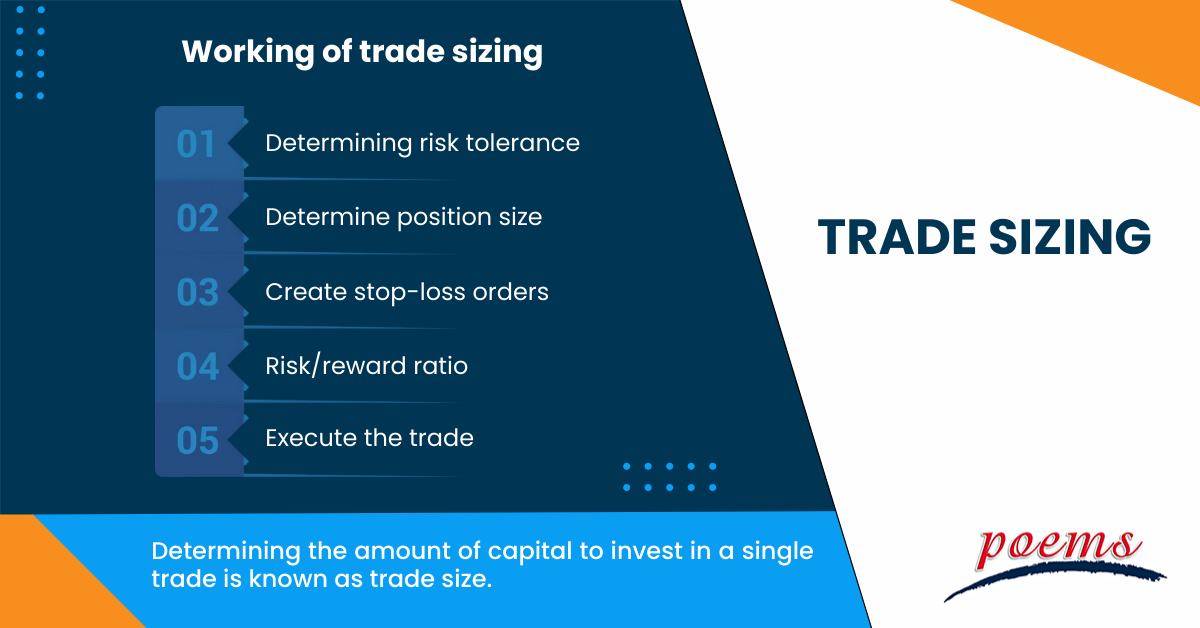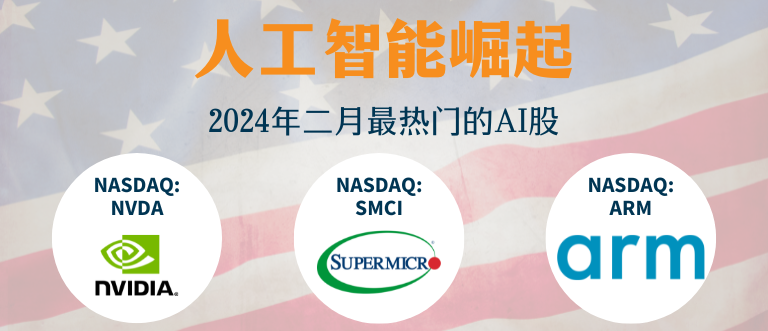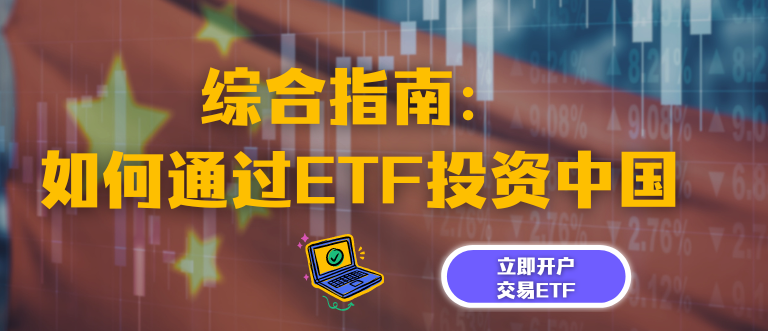Trade sizing
Table of Contents
Trade sizing
In order to manage risk, maximise profits, and accomplish long-term trading goals, it is essential to master the skill of allocating the right amount of money to a transaction. Successful trading requires careful consideration of trade sizing. It is frequently overlooked, despite the fact that it may build or destroy a trader’s career, while many traders concentrate on entry and exit tactics.
What is trade sizing?
Determining the amount of capital to invest in a single trade is known as trade size. It’s not a one-size-fits-all strategy; rather, it calls for careful thought and modification based on a number of aspects. These variables include the trader’s risk tolerance, market circumstances, account size, as well as a specific trading approach.
Understanding trade sizing
The right trade size aids investors and traders in managing possible losses and maximising gains. Risk tolerance, account size, anticipated volatility, and the particular trading method being used are all variables that affect trade sizing. Individuals may achieve a balance between profit potential and capital preservation by properly sizing deals, ensuring that no one trade has an unfavourable effect on their whole portfolio. Maintaining financial security and long-term trading success depend on this practice.
Trading professionals may better manage risk, retain emotional control, and increase their prospects of long-term success in financial markets by implementing strong risk management concepts and sticking to well-defined trade size techniques. Always keep in mind that your ability to conserve and develop your trading money over time is more important than simply how much you may profit from a single deal.
Working of trade sizing

In simple words, here’s how trade sizing works:
- Determining risk tolerance
Traders must first assess their level of risk tolerance. Knowing how much of their cash they are prepared to risk on a single deal is essential for this. Risk tolerance varies from person to person and is influenced by things like experience, financial objectives, and psychological fortitude.
- Determine position size
Traders utilise their defined risk tolerance to determine the position size for a transaction. This entails figuring out how much money will be at stake in the deal, often expressed as a percentage of the entire trading capital.
- Create stop-loss orders
For every trade, traders need to specify a stop-loss order. The stop-loss is a pre-set price level below which the deal will be closed off in order to prevent further losses. The separation between the entry point and the stop-loss level influences the position size.
- Risk/reward ratio
Traders weigh the risk vs the potential profit. They seek a favourable risk-reward ratio in which the possibility of profit outweighs the possibility of loss.
- Execute the trade
The trader completes the transaction having established the position size and risk criteria. This entails entering the market at a particular price, and the size of the position guarantees that the calculated risk remains intact.
Importance of trade sizing
Trade size is crucial in both trading and investing. Risk management, long-term viability and profitability are all directly influenced. Effective trade sizing benefits traders in different ways.
- Risk management reduces the chances of major losses by ensuring that no single deal poses a significant danger to a trader’s capital.
- Proper trade size lessens the emotional stress related to trading since it limits losses and discourages overtrading.
- Traders that keep their trade sizes constant might create a better organised and long-lasting trading approach.
- Profits may be maximised by traders using smart capital allocation techniques when pricing trades.
Examples of trade sizing
For instance, if a trader wishes to purchase shares of a stock with a 5% maximum risk per transaction and has a US$100,000 portfolio, they might allocate US$5,000 (US$100,000 * 0.05) to that trade. This would be equivalent to buying 100 shares of the stock at US$50 a share. The right trade size guarantees that any losses are controllable and complement the investor’s entire risk management plan.
Frequently Asked Questions
You must take into account your risk tolerance, account balance, and the particulars of the trade when determining trade size. Utilising a portion of your whole account balance is a frequent strategy.
Here is an easy formula: trade size = stop loss in pips / (account balance * risk percentage).
Calculating the right amount of capital to allocate to each transaction or investment is known as capital sizing in trading. It is an essential risk management technique that aids traders and investors in safeguarding their investments. Setting a maximum proportion of total money that can be staked on a single deal aims to minimise excessive losses and maximise rewards.
The risk tolerance of the trader, the volatility of the asset, and the diversification of the entire portfolio all influence this proportion, also known as position size. The markets are more likely to be sustainable over the long run when capital is appropriately sized to guarantee that no single deal has the potential to have a substantial influence on the trader’s overall financial health.
As it directly affects risk and possible profits, trade size is important in both investing and trading. A larger trade size suggests more exposure to market volatility, which might result in both larger gains and losses.
Smaller trade sizes, on the other hand, lower risk but may restrict possible gains. Your risk tolerance, financial objectives, and portfolio diversification should influence your trade size selections.
Effective trade size management allows you to protect money, follow your risk management plan, and strike a balance between the likelihood of profit and the likelihood of loss, assisting you in maintaining a profitable and long-lasting trading or investing strategy.
A risk management principle known as the “3-5-7” rule in trading advises diversifying one’s financial holdings to reduce risk.
- 3% rule
The 3% rule states that you should never risk more than 3% of your whole trading capital on a single deal. In order to safeguard themselves against big losses, traders attempt to restrict exposures on a single deal.
- 5% rule
According to the second element, you shouldn’t put more than 5% of your total trading capital at risk in the market at any given moment. This takes into consideration numerous holdings and helps avoid very high market or asset concentration.
- 7% rule
The final part states that your portfolio’s overall maximum loss should be at most 7% of your trading capital. This regulation emphasises the significance of placing stop-loss orders to reduce possible losses.
To trade using position size, you must first choose how much capital (usually a percentage of your entire capital) you are willing to bet on a single deal. The position size is then determined by dividing this risk value by the difference between your entry price and stop-loss level. By preventing you from overcommitting to any one deal, this method helps you control risk and enables more consistent risk management throughout your trading portfolio.
Related Terms
- Secondary Market
- Subordinated Debt
- Basket Trade
- Notional Value
- Speculation
- Quiet period
- Purchasing power
- Interest rates
- Plan participant
- Performance appraisal
- Anaume pattern
- Commodities trading
- Swing trading
- Interest rate risk
- Equity Trading
- Secondary Market
- Subordinated Debt
- Basket Trade
- Notional Value
- Speculation
- Quiet period
- Purchasing power
- Interest rates
- Plan participant
- Performance appraisal
- Anaume pattern
- Commodities trading
- Swing trading
- Interest rate risk
- Equity Trading
- Adverse Excursion
- Booked Orders
- Bracket Order
- Bullion
- Trading Indicators
- Grey market
- Intraday trading
- Futures trading
- Broker
- Head-fake trade
- Demat account
- Price priority
- Day trader
- Threshold securities
- Online trading
- Quantitative trading
- Blockchain
- Insider trading
- Ex-dividend date
- Equity Volume
- Downtrend
- Derivatives
Most Popular Terms
Other Terms
- Options expiry
- Adjusted distributed income
- International securities exchanges
- Settlement currency
- Federal funds rate
- Active Tranche
- Convertible Securities
- Synthetic ETF
- Physical ETF
- Initial Public Offering
- Buyback
- Secondary Sharing
- Bookrunner
- Notional amount
- Negative convexity
- Jumbo pools
- Inverse floater
- Forward Swap
- Underwriting risk
- Reinvestment risk
- Final Maturity Date
- Payment Date
- Margin Requirement
- Mark-to-market
- Pledged Asset
- Yield Pickup
- Trailing Stops
- Treasury Stock Method
- Stochastic Oscillator
- Bullet Bonds
- Contrarian Strategy
- Exchange Control
- Relevant Cost
- Dow Theory
- Stub
- Trading Volume
- Going Long
- Pink sheet stocks
- Rand cost averaging
- Sustainable investment
- Stop-limit sell order
- Economic Bubble
- Ask Price
- Constant prepayment rate
- Covenants
- Stock symbol
- Companion tranche
- Synthetic replication
- Bourse
- Beneficiary
Know More about
Tools/Educational Resources
Markets Offered by POEMS
Read the Latest Market Journal

本文旨在为中级外汇交易者提供必要的信息和知识。它将涵盖我们上一篇文章 “五分钟看懂世界上最活跃的市场-外汇差价合约(FX CFD)...

解锁台湾股市的投资潜力!深入了解由强大的技术驱动型经济推动的股票市场,2023 年机械和电气设备将占出口的 69%。在政治稳定、投资者友好的法规和健全的法律框架下,探索台积电和富士康等全球顶级企业。台湾股市值得称赞的历史表现和在国际贸易中的的重要性使其更具吸引力。在这个科技实力雄厚、经济稳定、充满活力的股票市场中,抓住增长机遇!

了解外汇市场 外汇交易市场又称外汇市场,是一个买卖货币的全球性金融市场。它是全世界规模最大、流动性最强的金融市场,每日交易量超过 6 万亿美元。但外汇市场有一个重要却常被忽视的一点,就是它受交易心理的影响。在本文中,我们将探讨外汇市场的复杂性,还有把重点放在交易心理与传统交易策略共同发挥的关键作用...

五分钟看懂世界上最活跃的市场 -外汇差价合约(FX CFD)
外汇交易市场俗称外汇或外汇市场,是全球金融市场的支柱。它是世界上最活跃的市场,2022 年 4 月,全球交易额达到创纪录的每天 7.5 万亿美元[1] 。这个活跃的市场为交易者提供了利用货币价格波动赚取利润的机会。在本文中,我们将解释外汇市场的基本原理,助您了解其投资机制。 什么是外汇? 外汇市场是一个分散的全球市场,世界上所有货币都在这里进行交易...

随着通胀数据趋向 2% 的理想目标,人们普遍乐观地认为,在任何可能的降息之前,市场都不会受到不利影响。以下是美股市场2024年的一些重要事件,投资者在做出投资决策时可以参考留意。

根据《东南亚态势报告:2023》,失业和经济衰退是当前东南亚面临的主要挑战。各国采取了各种政策和措施以恢复经济,尽力摆脱新冠疫情的影响。尽管如此,越南在经济和社会方面展现出了令人满意的复苏迹象,经济增长逐季上升,成为世界经济的亮点之一。虽然全年GDP增速放缓至5.05%,低于政府6.5%的目标,但越南仍然是地区和世界经济增速较快的国家之一。






















